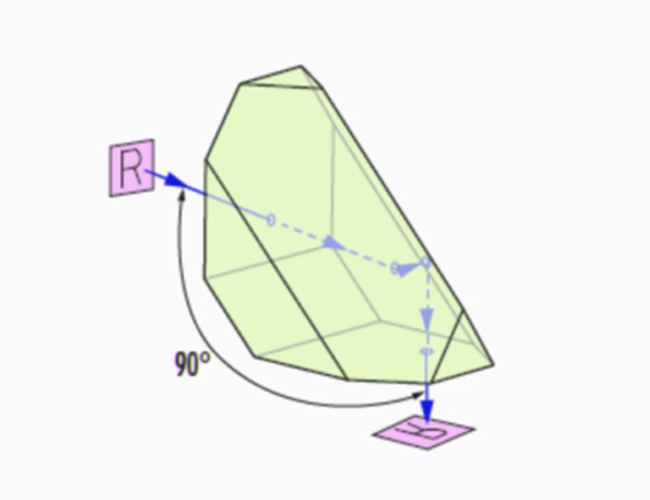ISO9001 Certified Professional Manufacturer & Supplier of Optics
+86-0431-87911611 admin@ytoptics.com
Contact us
-
 Email: admin@ytoptics.com
Email: admin@ytoptics.com
-
 Tel:86-0431-87911611
Tel:86-0431-87911611
-
 Add: 2# Automotive Innovation
Add: 2# Automotive Innovation
Jilin Province, China
Changchun Yutai Optics Co., Ltd.
Home > Products > Prisms > Roof Prisms

UV Fused Silica Roof Prism
Roof prism is a type of optical prism commonly used in binoculars, microscopes, and other optical instruments to adjust the direction of the light path and maintain image consistency from side to side by reflecting and refracting light rays.
Share this:
Basic structure and principles of roof prisms
Roof surface: one of the reflective surfaces of a prism is designed as a “roof” (similar to the angle of two sloping surfaces of a roof, usually 90°), and these two sloping surfaces flip the direction of the light through secondary reflections, thus correcting for left-right inversion of the image.
Optical path adjustment: after many times of total reflection inside the prism, the light ray outgoing direction is parallel to the incoming direction, but the optical path is collapsed, which shortens the length of the instrument.
Phase correction: high-end roof prisms are coated with a phase coating to solve the problem of optical range difference caused by beam splitting on the roof surface, and to improve imaging contrast and resolution.
Roof surface: one of the reflective surfaces of a prism is designed as a “roof” (similar to the angle of two sloping surfaces of a roof, usually 90°), and these two sloping surfaces flip the direction of the light through secondary reflections, thus correcting for left-right inversion of the image.
Optical path adjustment: after many times of total reflection inside the prism, the light ray outgoing direction is parallel to the incoming direction, but the optical path is collapsed, which shortens the length of the instrument.
Phase correction: high-end roof prisms are coated with a phase coating to solve the problem of optical range difference caused by beam splitting on the roof surface, and to improve imaging contrast and resolution.
| Comparison of roof prism and paul prism | ||
| Characteristic | Roof Prism | Paul Prism |
| Volume | Compact, straight design | Large volume and wide objective lens spacing |
| Imaging Quality | Dependent on coating technology | Naturally high contrast |
| Cost | Relatively high | Relatively low |
| Typical Application | High-end portable binoculars | Conventional telescopes (for navigation) |

TALK TO US 86-0431-87911611
86-0431-87911611
Call us now!
 86-0431-87911611
86-0431-87911611Call us now!
ONLINE CHAT
 2433808388
2433808388

